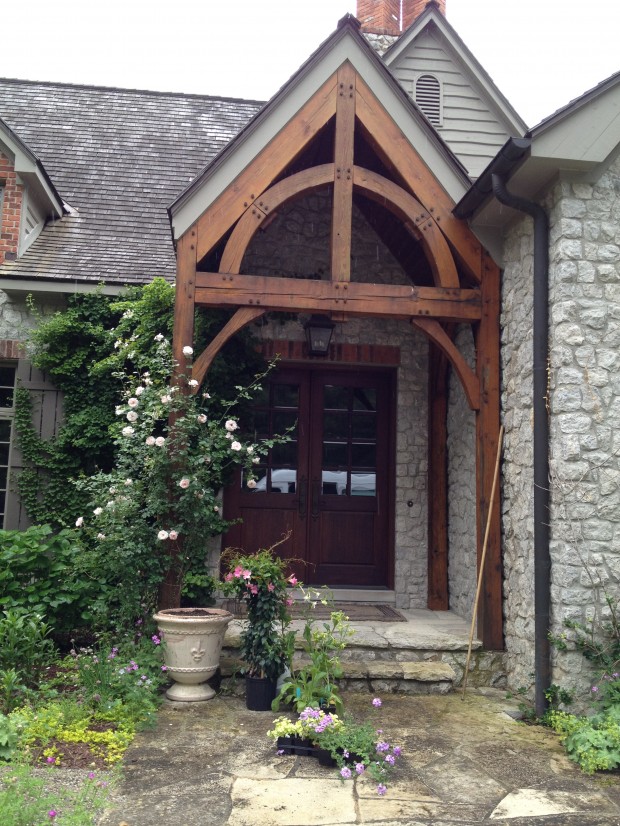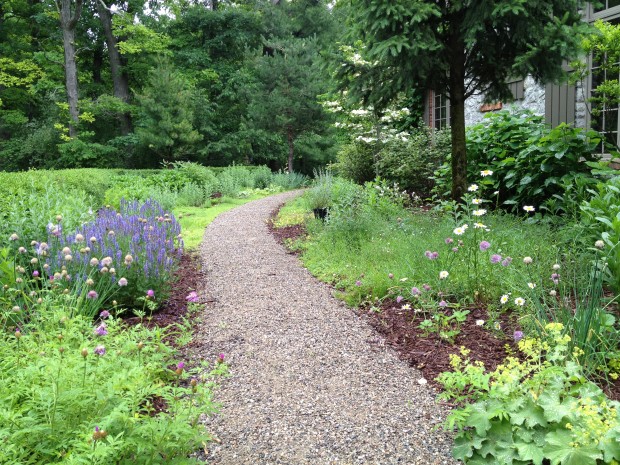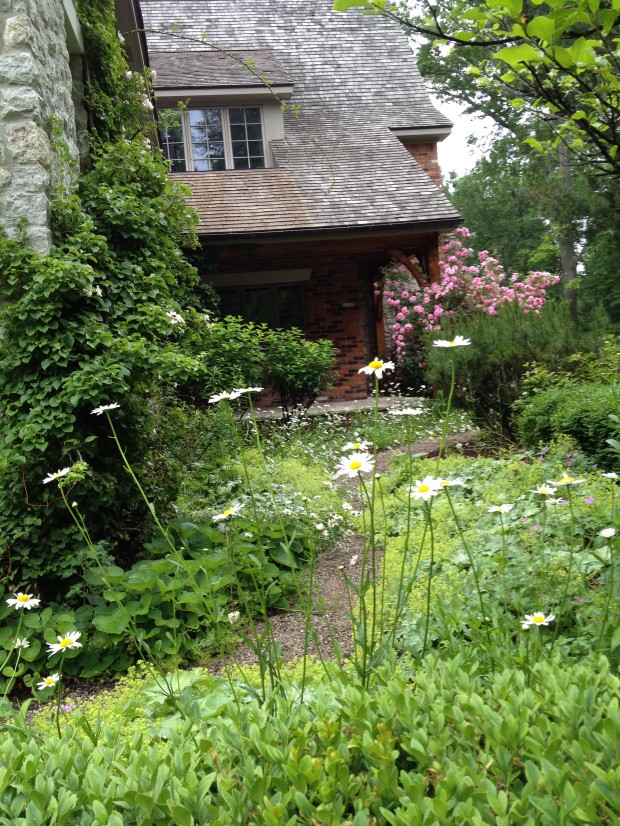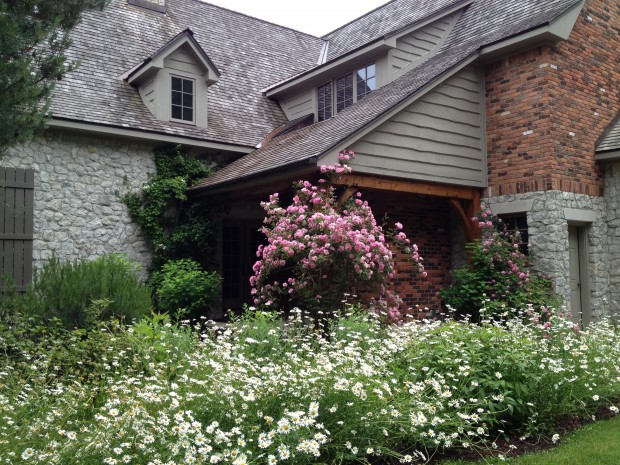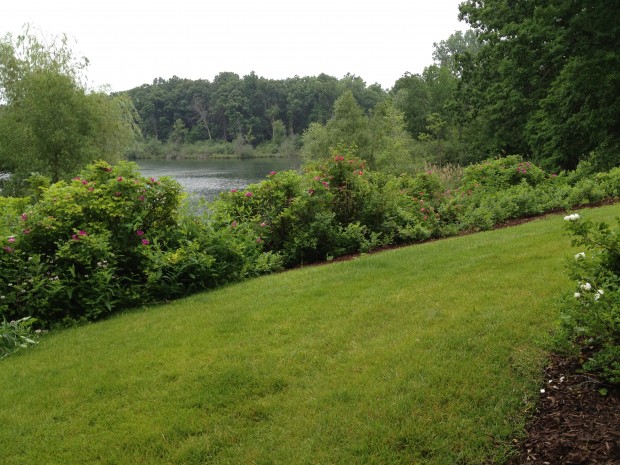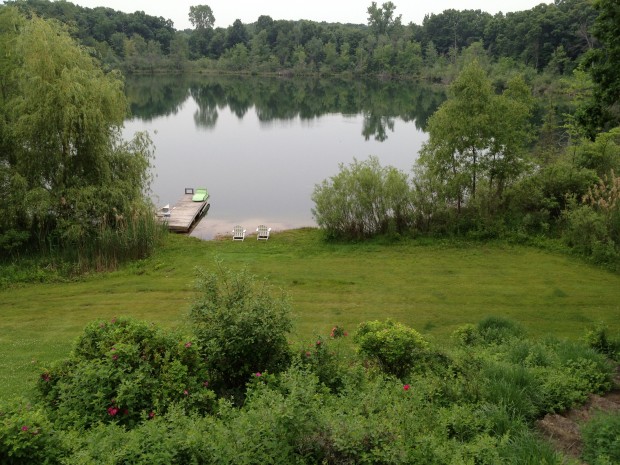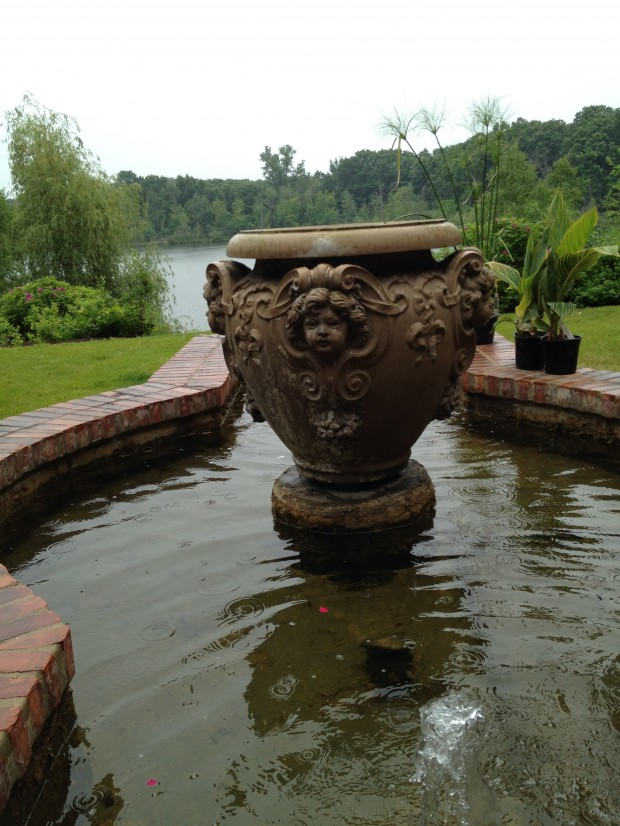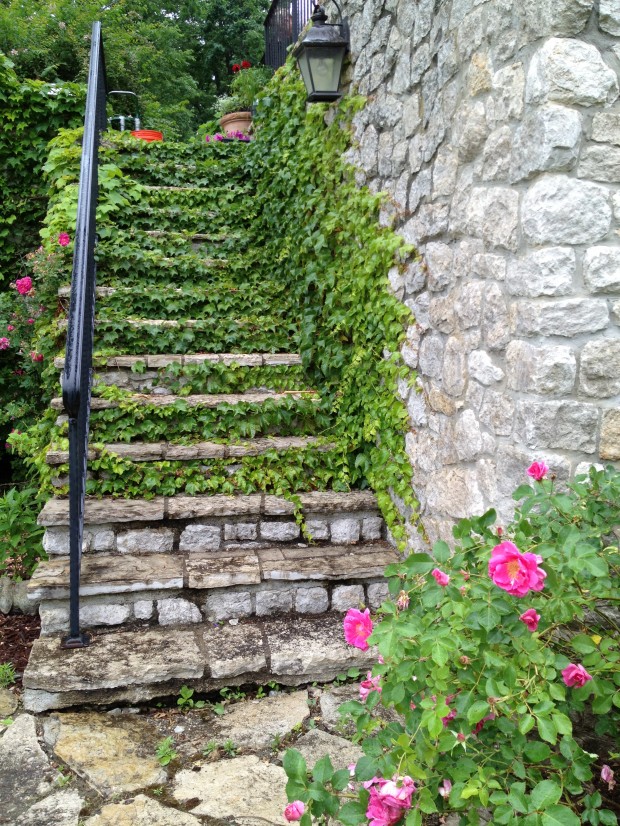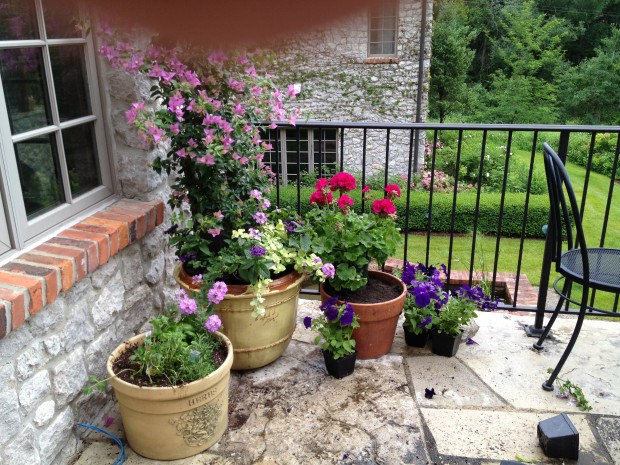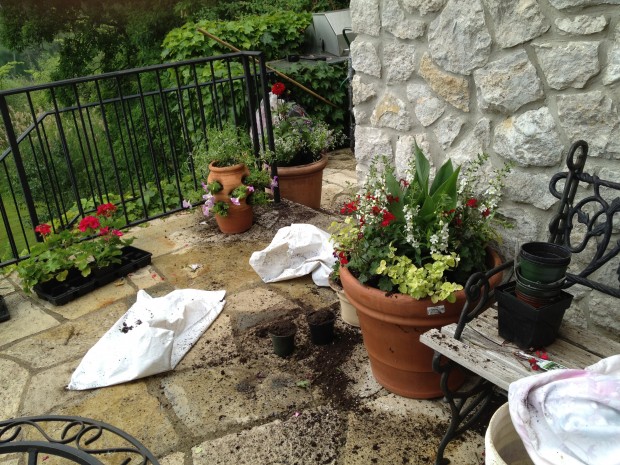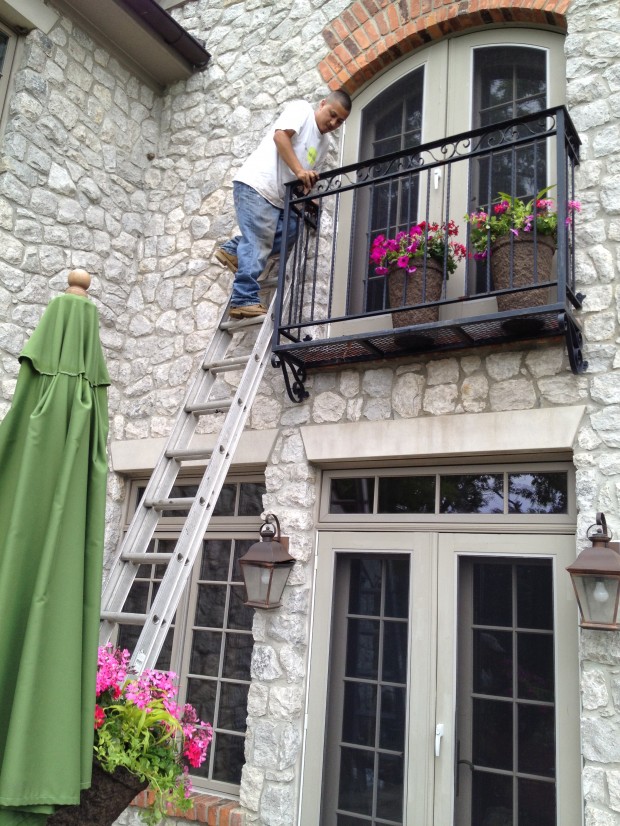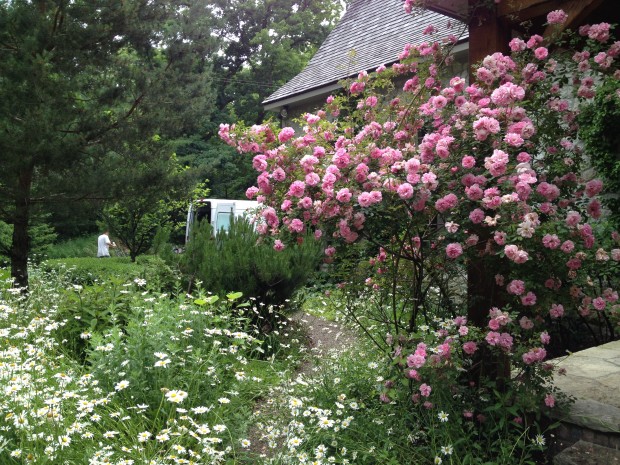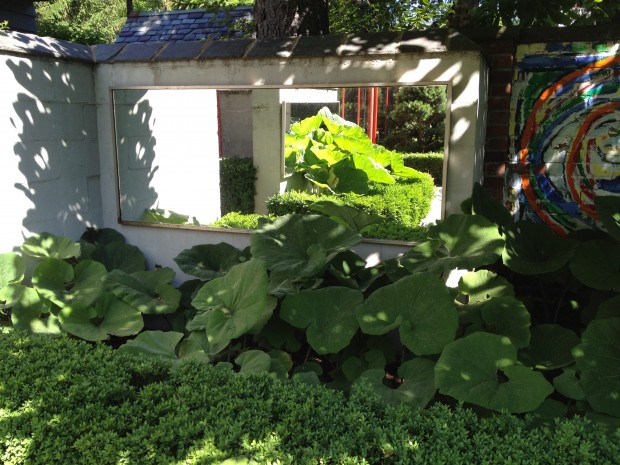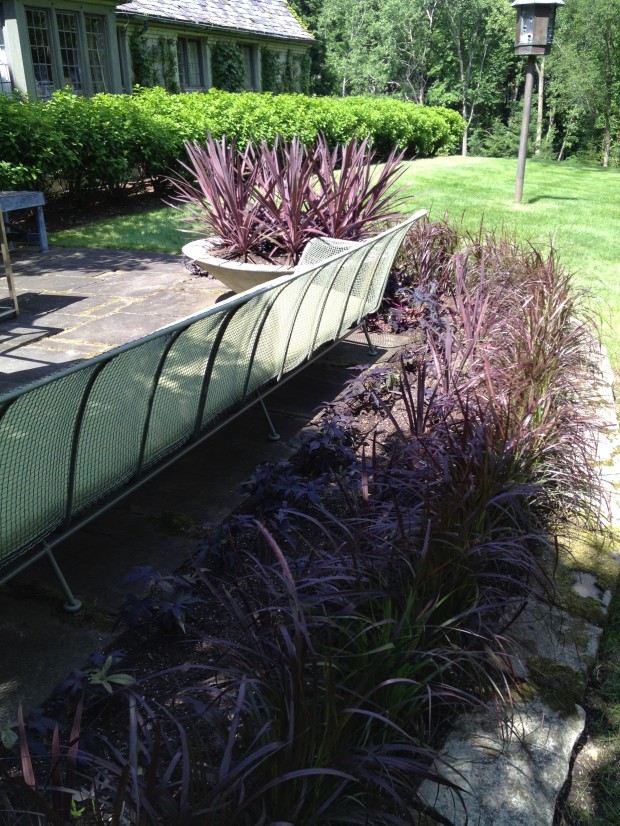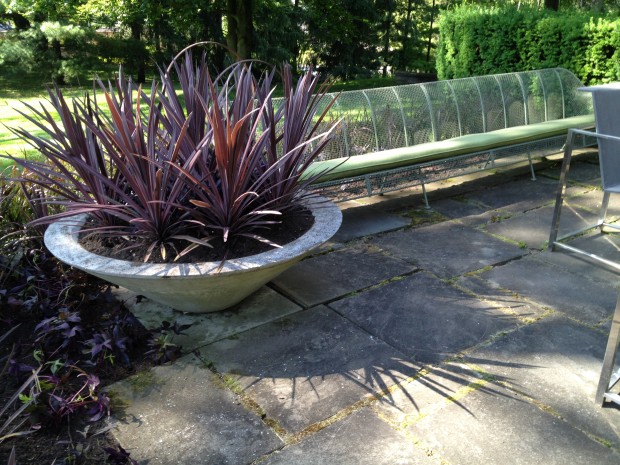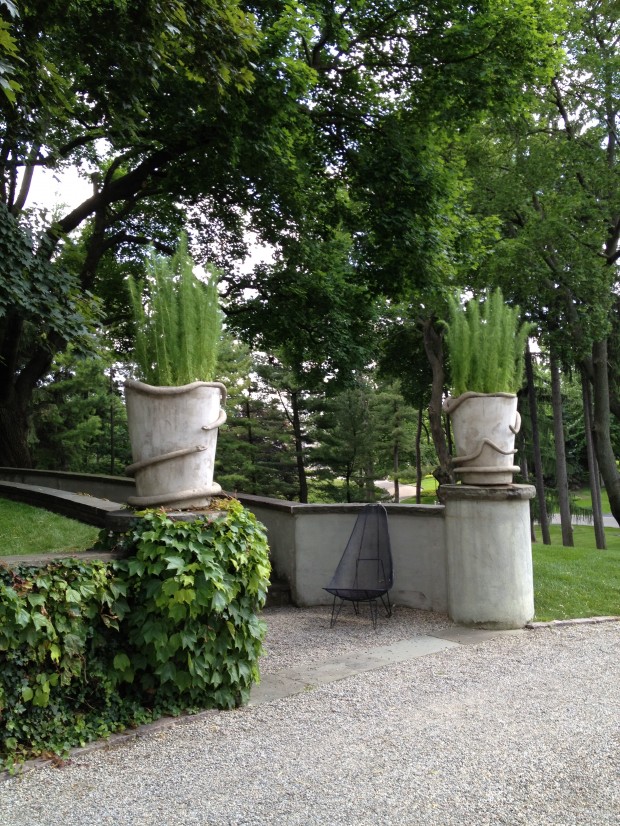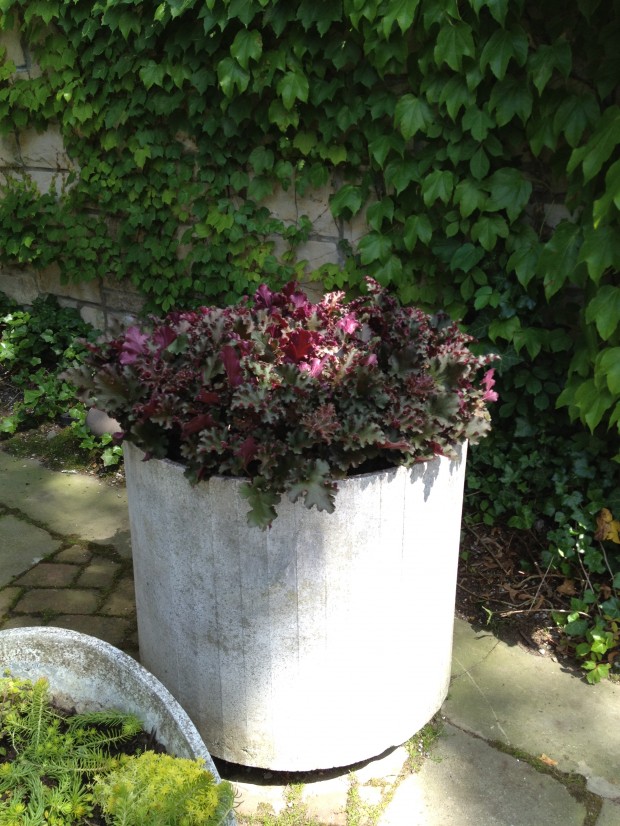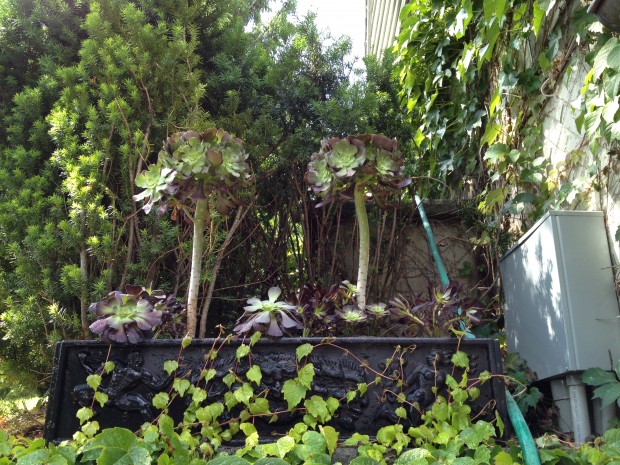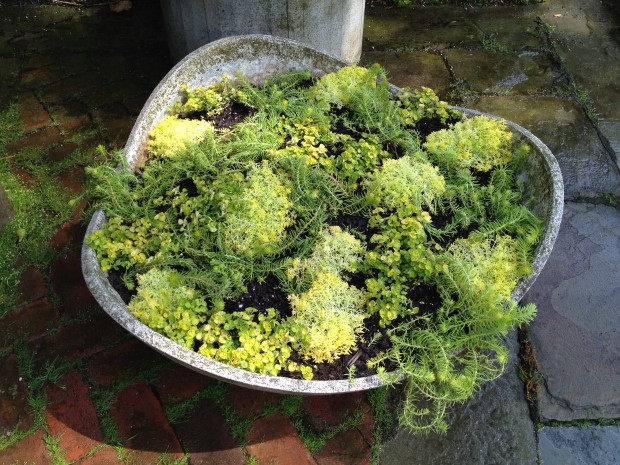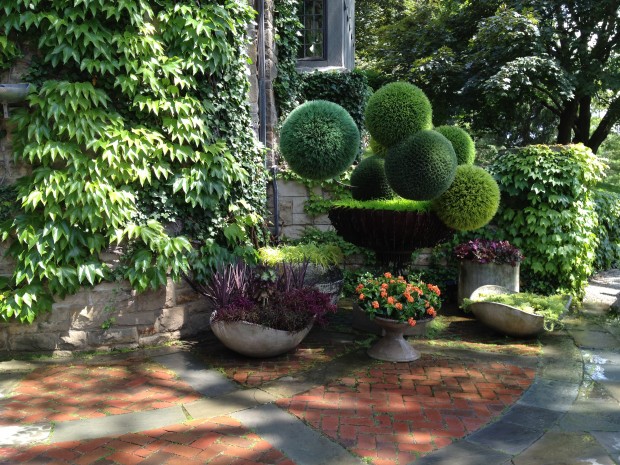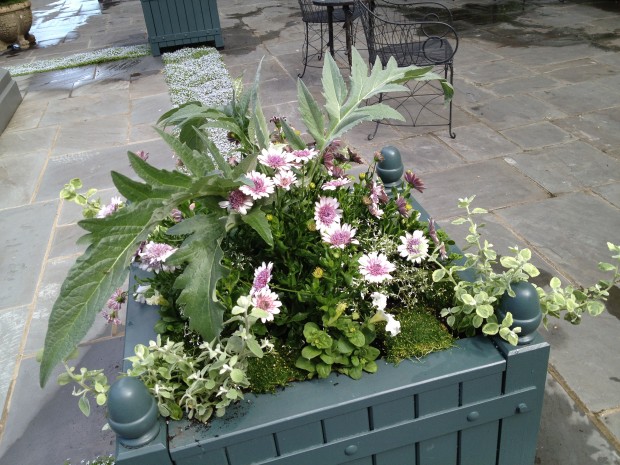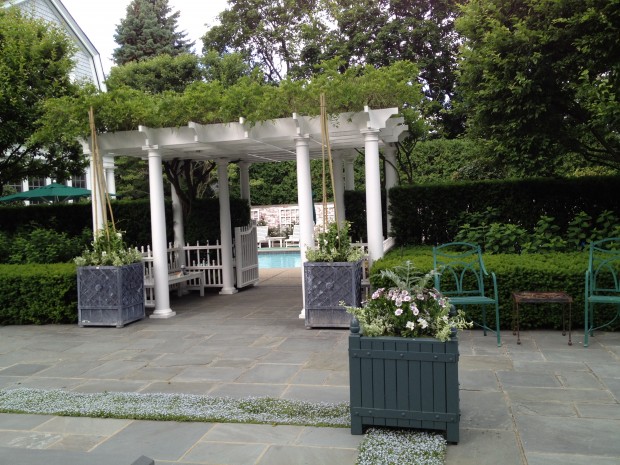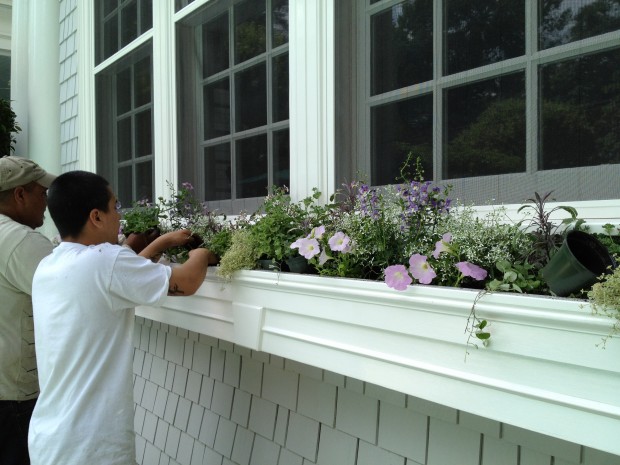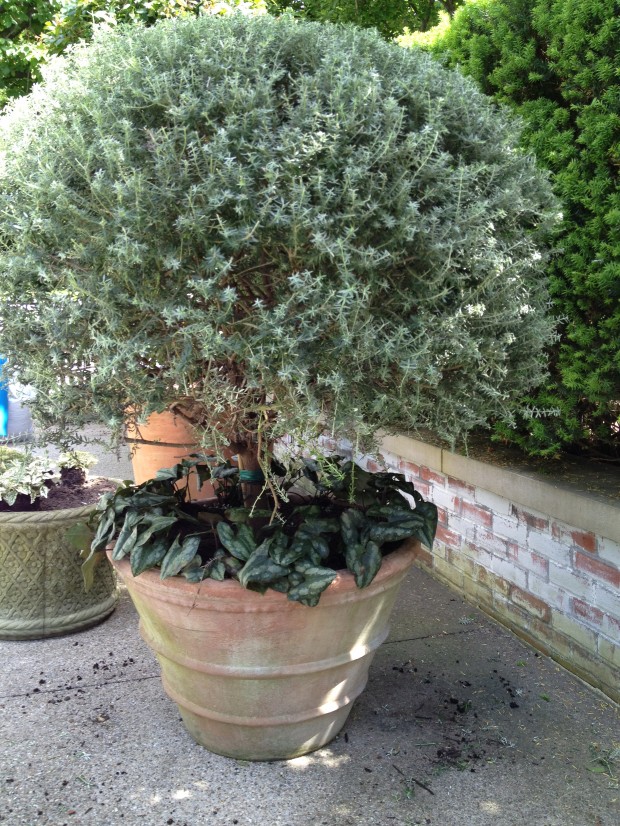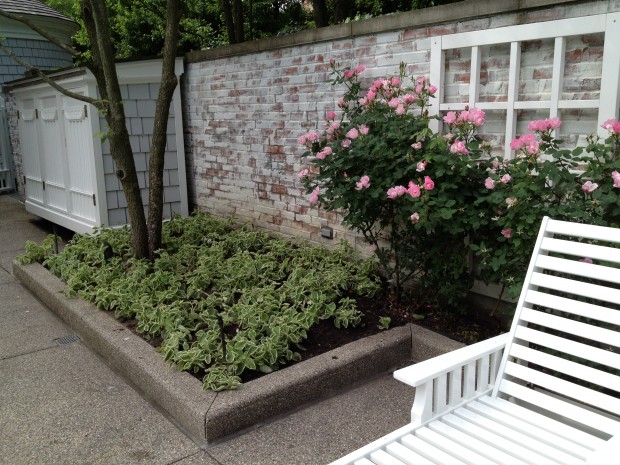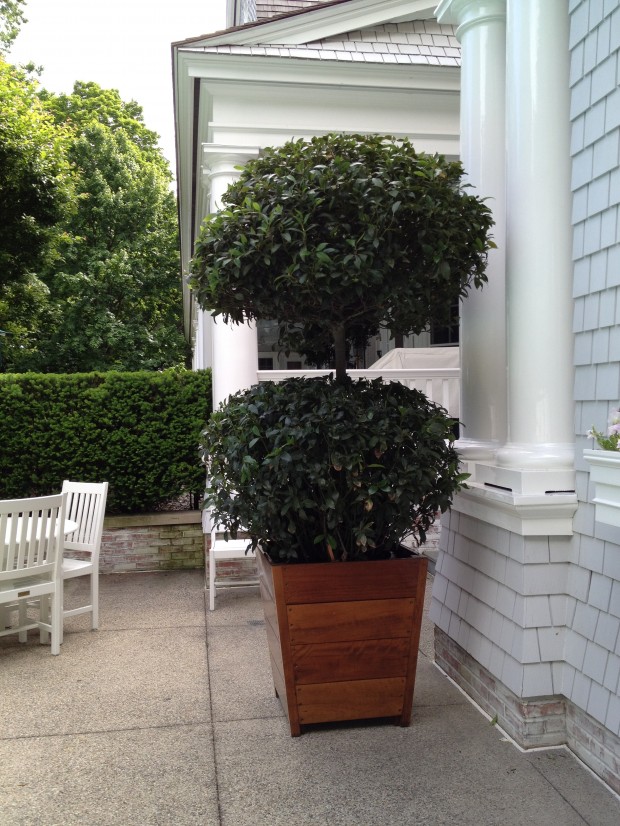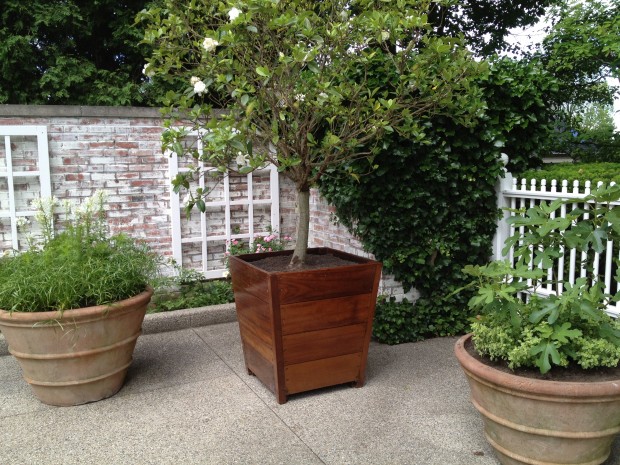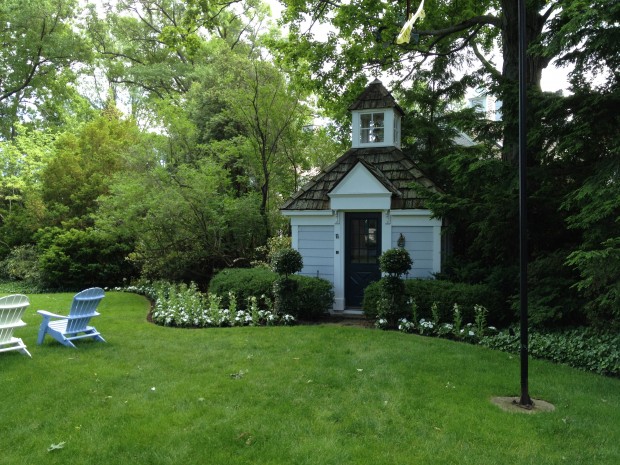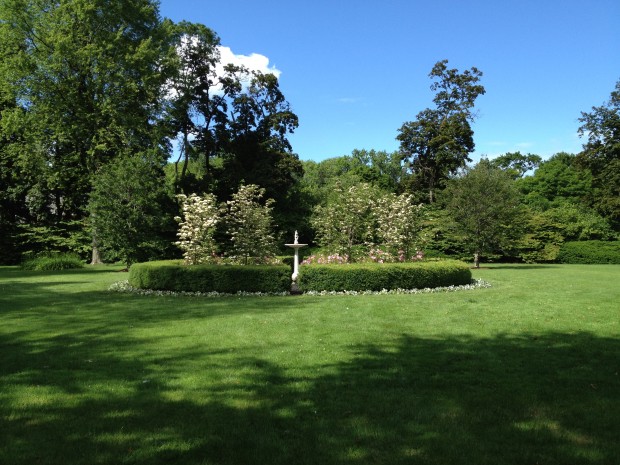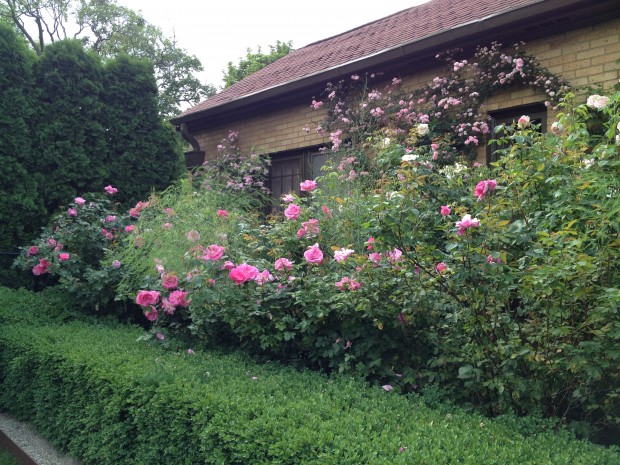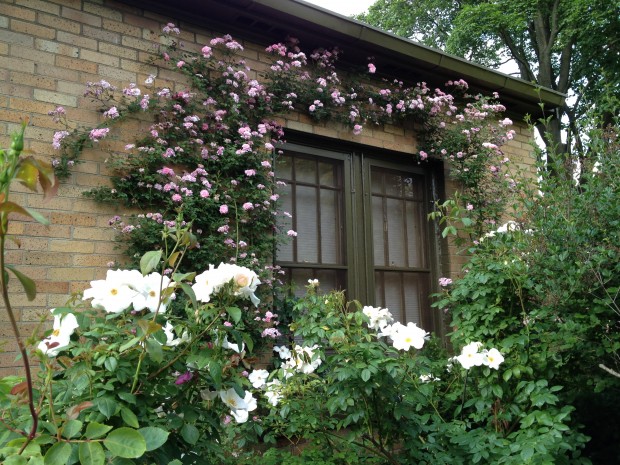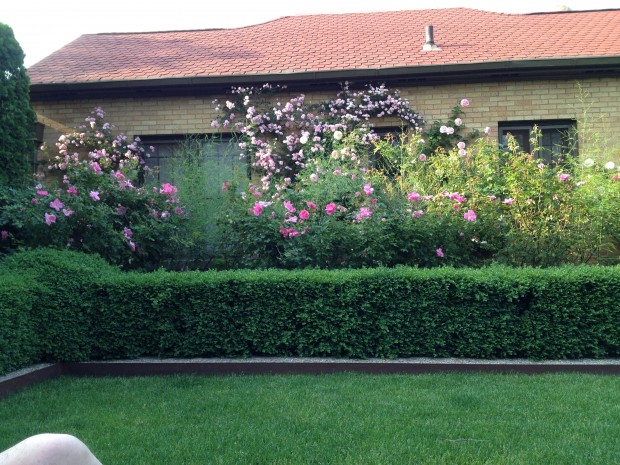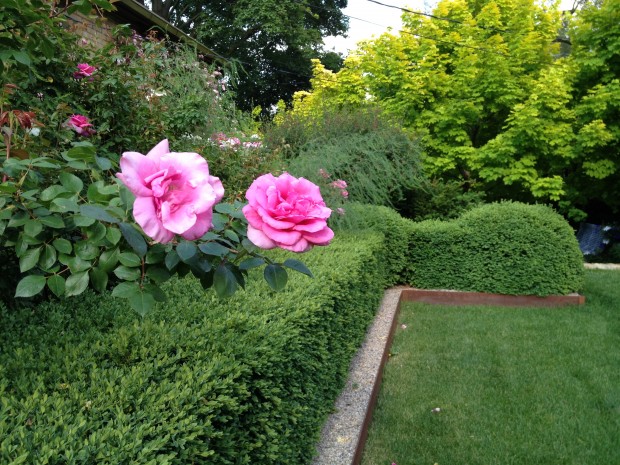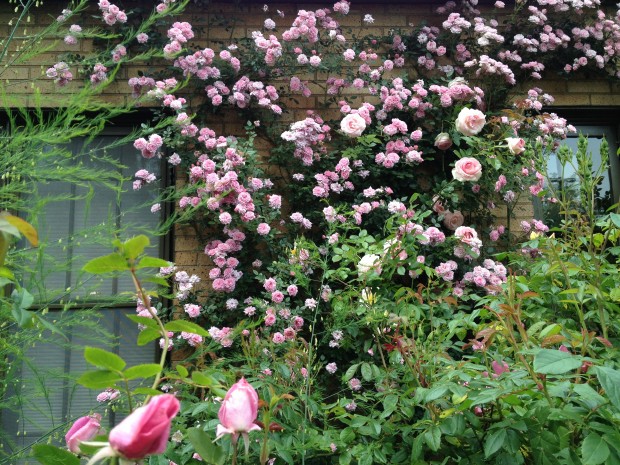I am still out with my crew planting the flowers non-stop. It will be close to 80 projects, once all is said and done. The work of getting ready to plant is grueling-the design, shopping, loading, unloading, emptying out old soil and adding fresh. A good many of these jobs take upwards of 5000 pounds of soil. Every plant that gets planted is placed by me. I may make a change in a design, faced with the actual plants and the actual containers. A plan is a guide. So extra plants get taken along, should they need to be called into service.
This planting is 40 minutes away from me, in a remote location down a dirt road, on a small lake. I did the landscape for this new house probably 8 years ago. The annual planting is not a particularly large or elaborate one. What make the job such a pleasure is a chance to spend some time in a landscape that is getting some age on it.
The perennial gardens are fairly wild. Only the strongest plantshave prevailed-the soil is very sandy, the care is casual, and the wildlife is active. My client is a business owner who loves the garden, but in a different way. He likes that some plants have grown together, that other plants have receded. He likes that very casual cottage look. A large deer population keepsd his evergreens skirted up-especially in winters where the snowcover is deep.
I find its overgrown and unfussed over appearance very relaxing and serene. It has evolved into a landscape that is more wild than not. I find it has that rural French look that Rob photographs over and over again when he is abroad.
We plant lots of verbena bonariensis and cosmos in the areas where wild daisies have colonized. We don’t touch the climbing roses, climbing hydrangeas, clematis or Boston ivy.
A steep slope in the back is planted with grasses and shrub roses. The path to the rear large is a large and simple swath of field grass. By this I mean the grass has violets, clover, and all manner of other short growing green plants that do not mind a mower.
The stone staircase pictured on the right is the only safe way to get to the lake, although I can imagine sledding down this hill in the winter. The landscape at the lake is what nature put there to begin with. This is one of the quietest places I have ever been. That alone makes this planting trip a pleasure.
Most of the pots we plant are fiber pots, which we replace yearly. In a month, the pots will not be visible, for the planting. Flowers will cascade over the balcony.
This 19th century coadestone pot made by Doulton (now the Royal Doulton china company in England) became the centerpiece of this fountain. It is lined with a waterproof plastic container, into which we place a collection of water plants.
The changes of grade are a challenge for moving plants and soil around, but they offer beautiful views of the lake. It will be a while before these pots look like much. But this is a job which is a pleasure to plant. To be here is a lot more than work. It is an experience I look forward to every year.
Almost done.
